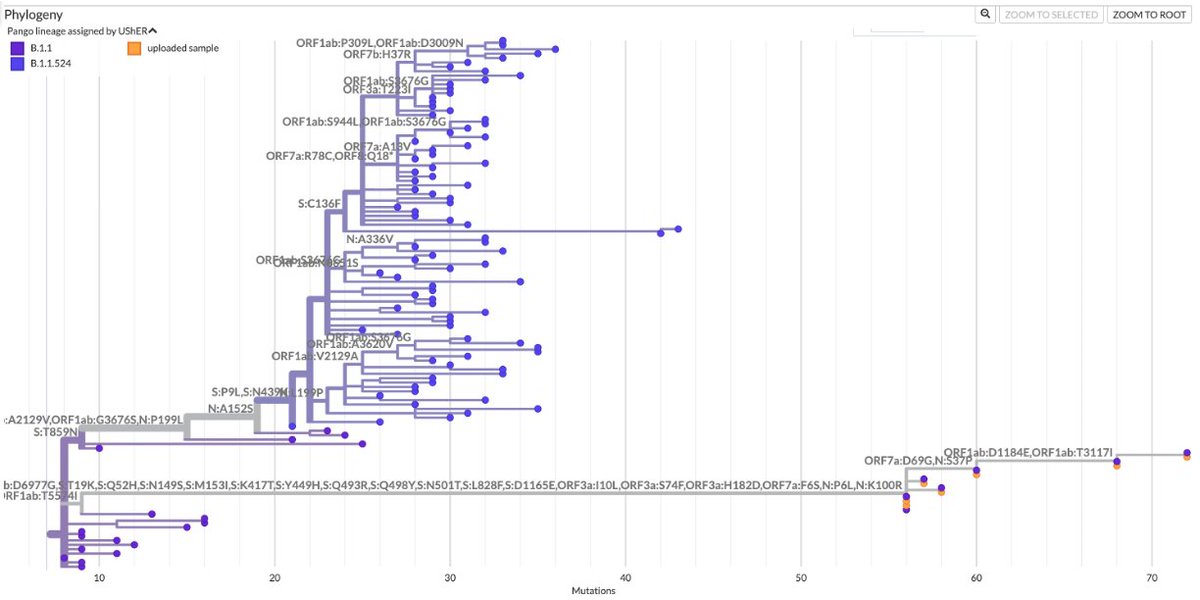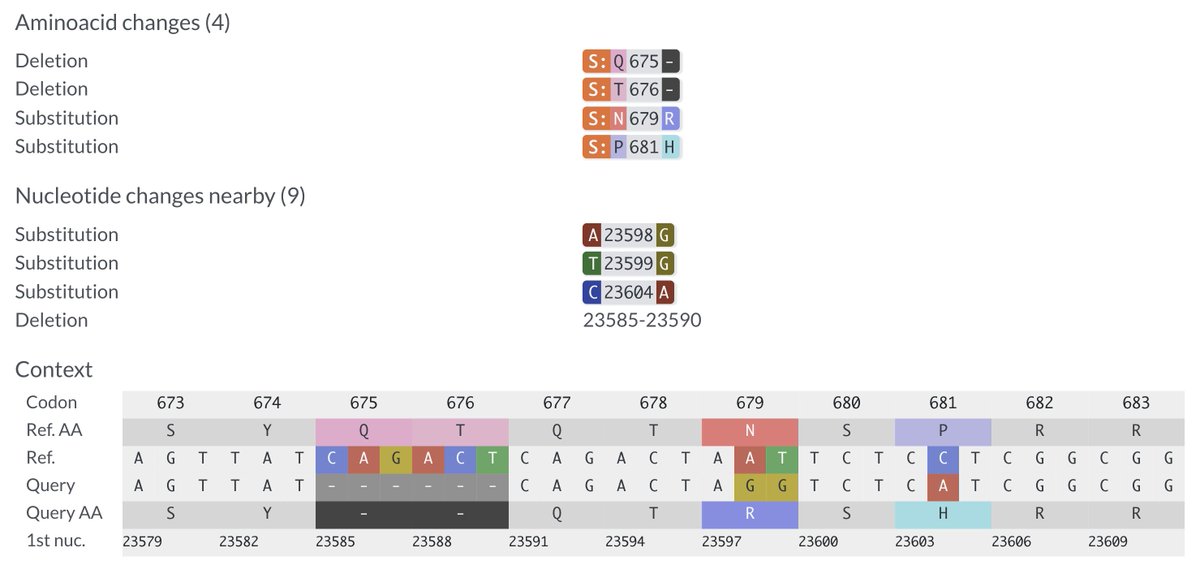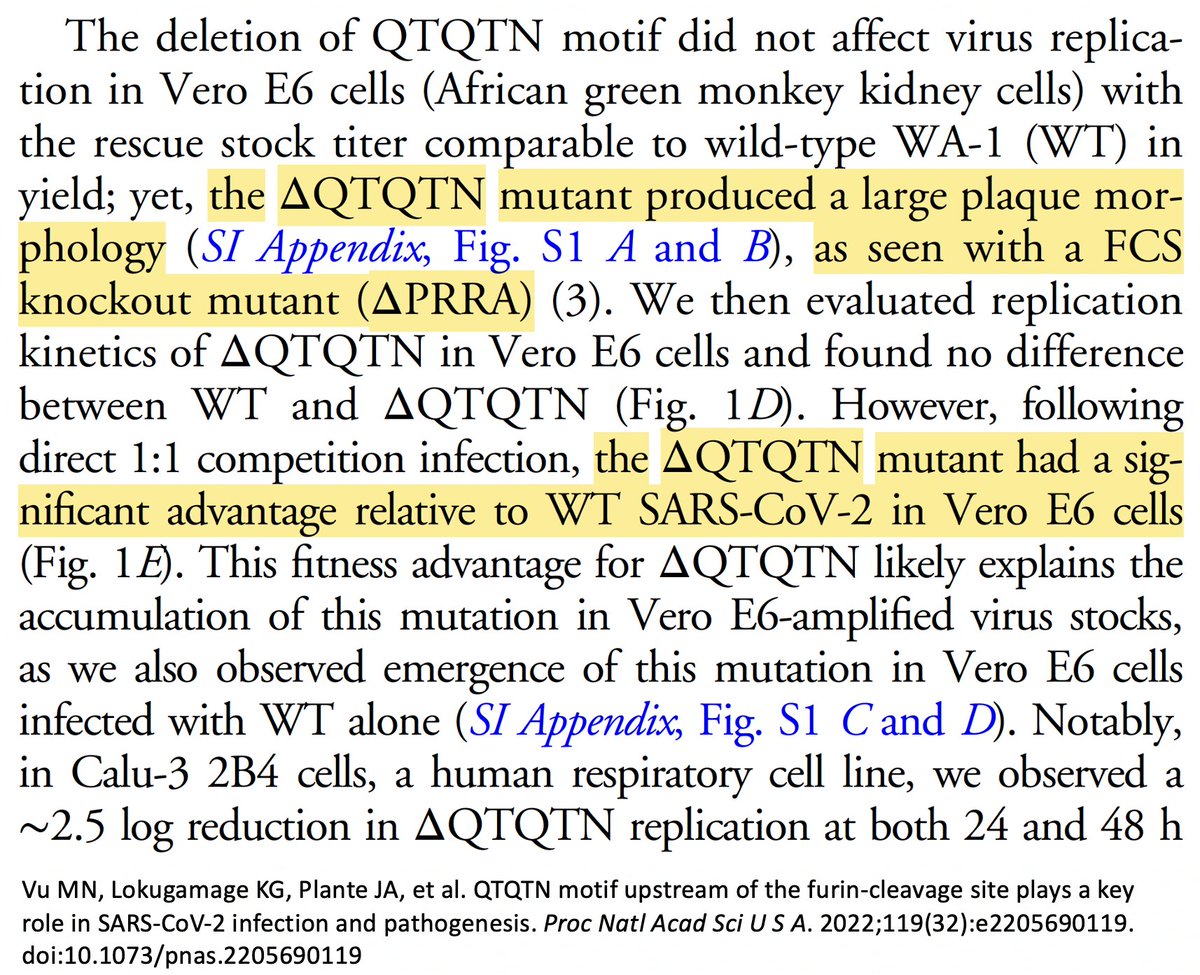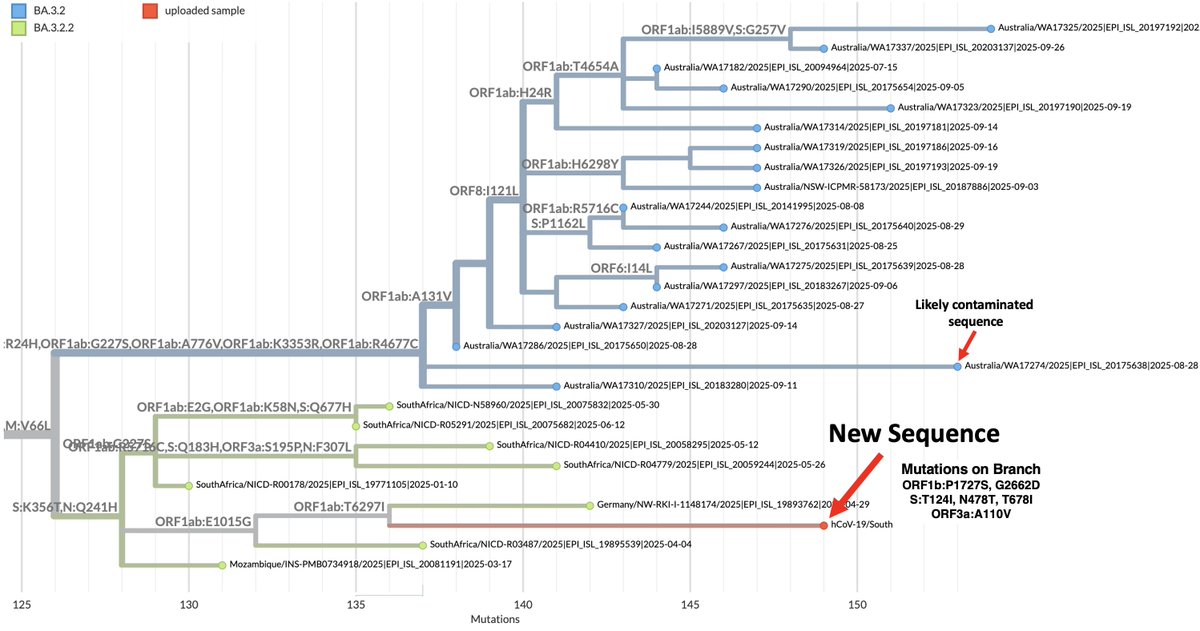
Teacher
"Be ruthless with systems and be kind to people."
Michael Brooks, 1983-2020
37 subscribers
How to get URL link on X (Twitter) App


https://twitter.com/SolidEvidence/status/1991888519112093740The first instance involved a small cluster of sequences that hospitalized several people & resulted in the death of a young child in early 2022. More on this one later. 2/15

https://twitter.com/snpoehlm/status/1985998506365231105@StuartTurville has pointed out that WA delayed Covid spread longer than elsewhere in Australia. China has a somewhat similar immune history (as do other SE Asian countries). Perhaps BA.3.2 will do well in China once it arrives there? 2/4
https://x.com/StuartTurville/status/1983308264407503168

https://twitter.com/snpoehlm/status/1980953067777368569
 Work by @TheMenacheryLab looked at a similar, more extensive, deletion. They deleted both QT repeats plus the next AA (∆QTQTN). In Vero cells (monkey kidney cells), it produced extra-large plaques & outcompeted WT virus—similar to furin cleavage site (FCS)-deletion mutants. 2/12
Work by @TheMenacheryLab looked at a similar, more extensive, deletion. They deleted both QT repeats plus the next AA (∆QTQTN). In Vero cells (monkey kidney cells), it produced extra-large plaques & outcompeted WT virus—similar to furin cleavage site (FCS)-deletion mutants. 2/12 

 For those not following closely, here's a 🧵 I made about BA.3.2 (not yet designated at the time) that I made some months ago, when it first burst upon the scene. 2/7
For those not following closely, here's a 🧵 I made about BA.3.2 (not yet designated at the time) that I made some months ago, when it first burst upon the scene. 2/7https://x.com/LongDesertTrain/status/1899647059872850369

 In South America, this may have already happened. Recent sequences are scarce, but they nearly all have some sort of FCS-weakening mutation, mostly S:S680P in XFG.3.4.1, but with several others (S680F, S680Y, R683Q, R683W) contributing as well. 2/4
In South America, this may have already happened. Recent sequences are scarce, but they nearly all have some sort of FCS-weakening mutation, mostly S:S680P in XFG.3.4.1, but with several others (S680F, S680Y, R683Q, R683W) contributing as well. 2/4 

https://twitter.com/LongDesertTrain/status/1962980575054332049The ever-fertile mind of @Nucleocapsoid proffers the possibility that exosomes could be responsible for viral spread in some tissue reservoirs. I don't know much about this topic and so don't have much to say at the moment, but I'm trying to l learn. 2/
https://x.com/Nucleocapsoid/status/1962978769184153687

 First, a brief summary of the relevant parts of the preprint. They examined 30 people (from NIH RECOVER cohort) for 6 months after they had Covid, taking detailed blood immunological markers at 3 time points. 20 had Long Covid (PASC), 10 did not (CONV). 2/ biorxiv.org/content/10.110…
First, a brief summary of the relevant parts of the preprint. They examined 30 people (from NIH RECOVER cohort) for 6 months after they had Covid, taking detailed blood immunological markers at 3 time points. 20 had Long Covid (PASC), 10 did not (CONV). 2/ biorxiv.org/content/10.110…

https://twitter.com/snpoehlm/status/1950476928760037506
 It was collected July 15, & is most closely related to the recent S African seqs from May & June.
It was collected July 15, & is most closely related to the recent S African seqs from May & June.

https://twitter.com/LongDesertTrain/status/1940384545741926911
 Bottom line, in my view: BA.3.2 has spread internationally & is likely growing, but very slowly. If nothing changes, its advantage vs circulating lineages, which seem stuck in an evolutionary rut, will likely gradually grow as immunity to dominant variants solidifies... 2/9
Bottom line, in my view: BA.3.2 has spread internationally & is likely growing, but very slowly. If nothing changes, its advantage vs circulating lineages, which seem stuck in an evolutionary rut, will likely gradually grow as immunity to dominant variants solidifies... 2/9

https://twitter.com/LongDesertTrain/status/18996470598728503692 interesting aspects of the new BA.3.2:


 This was a BA.3.2.1, the branch with S:H681R + S:P1162R (not S:K356T + S:A575S).
This was a BA.3.2.1, the branch with S:H681R + S:P1162R (not S:K356T + S:A575S).


 When the B.1.595 was collected this infection was >1 yr old, w/no sign of Omicron. BA.1 ceased circulating ~1 year prior.
When the B.1.595 was collected this infection was >1 yr old, w/no sign of Omicron. BA.1 ceased circulating ~1 year prior. 

https://x.com/LongDesertTrain/status/1837346366961451290…this preprint, along with another great study by the @DavidLVBauer, @theosanderson, @PeacockFlu & others prompted me to take a closer look...


 BA.3.2 is a clear outlier on the antigenic cartography map—as expected given the enormous differences between its spike protein & every other circulating variant. 2/9
BA.3.2 is a clear outlier on the antigenic cartography map—as expected given the enormous differences between its spike protein & every other circulating variant. 2/9 https://x.com/LongDesertTrain/status/1899647059872850369


https://twitter.com/LongDesertTrain/status/1904881791468515590
 They include the full panoply of NSP3, NSP12, & N muts I've written about previously. ORF1a:S4398L is the most common mutation in the 4395-4398 region, this has ∆S4398, a rarity also seen in a few other extremely divergent seqs w/this constellation. 2/6
They include the full panoply of NSP3, NSP12, & N muts I've written about previously. ORF1a:S4398L is the most common mutation in the 4395-4398 region, this has ∆S4398, a rarity also seen in a few other extremely divergent seqs w/this constellation. 2/6 https://x.com/LongDesertTrain/status/1781121824845099318


 Of the sequences near this one on the tree, all are low-quality & clearly bad BA.1 or Delta sequences. The only genuine one is from the UK, collected April 2020. So it's likely even S:T95I was not inherited.
Of the sequences near this one on the tree, all are low-quality & clearly bad BA.1 or Delta sequences. The only genuine one is from the UK, collected April 2020. So it's likely even S:T95I was not inherited. 

 While the full extent of the new BA.3’s spread is not known, it’s been detected in 2 different South African regions through regular (not targeted) surveillance by @Dikeled61970012, @Tuliodna, & the invaluable South African virology community.
While the full extent of the new BA.3’s spread is not known, it’s been detected in 2 different South African regions through regular (not targeted) surveillance by @Dikeled61970012, @Tuliodna, & the invaluable South African virology community.

 First, let me say that this is well-written, extremely readable, and accessible to non-experts, so you should go read the full paper yourself, if you can find a way to access it. (Just realized it’s paywalled, ugh.) 2/64nature.com/articles/s4157…
First, let me say that this is well-written, extremely readable, and accessible to non-experts, so you should go read the full paper yourself, if you can find a way to access it. (Just realized it’s paywalled, ugh.) 2/64nature.com/articles/s4157…